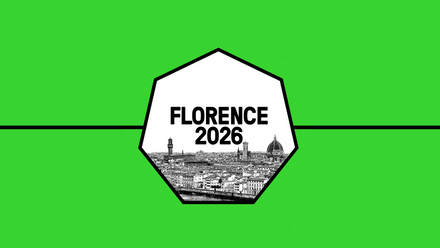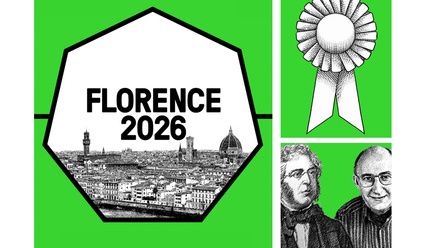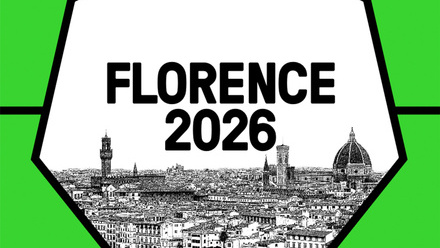Virtual Conferences: Fleeting Fad or Future Format?
The SEB, by its very nature, is experimental. So, when the time came to organise the 2021 SEB Annual Conference as a completely online event for the first time ever, experimenting was the only way forward. I spoke with members of the SEB team to discuss their first purely virtual conference and to weigh up the successes, challenges, and lessons from this year’s online SEB Annual Conference.
Conference organisation is a collaborative process between many parts of the SEB team, so to best understand how the SEB Annual Conference took digital flight, I started by speaking with Events Manager Eniola Alalade about her role in organising the 2021 Annual Conference and how this year’s event differed from the usual format. “I manage the SEB Annual Conference, the satellite meetings, the symposiums, and also now the webinars as well,” she says. “I work alongside an events intern, Emma, as well as the whole SEB team, including the committee and section chairs, who all have a lot of input on the structure and format of events to make sure it is scientifically sound.”
As part of this core SEB team, Cell Biology Section Chair David Evans is also responsible for helping to organise the conference and to support the people running the scientific sessions. “I’ve been a SEB member since I was a PhD student, gave my first ever conference talk at a SEB meeting and have attended almost every SEB conference since then,” says David. “But this was my first ever virtual conference.”
Because these events are planned a long time before they actually take place, the SEB team had no idea what state the world would be in when the 2021 conference came around. “The status of 2021 was still a big unknown factor and we didn’t want to make anyone uncomfortable in feeling that they would have to travel in person in order to attend, so the decision was made to look into other solutions,” says Eniola. “However, we still wanted to provide an amazing event for both members and non-members which would be safe for everybody to attend, so we decided to pivot to an online conference.”
Of course, the global pandemic didn’t only affect the planning of the 2021 conference, but also unfortunately completely ruled out the 2020 conference that had already been organised. David is quick to point out that although the actual session planning for 2021 didn’t differ too much from the usual, this conference was actually the culmination of both years’ worth of conference content. “The organisation remained fundamentally the same; the selection of topics and speakers was just as rigorous and we had the usual excellent science represented,” he explains, “but some things had to be ‘doubled up’ as we carried forward talks from the SEB 2020 conference.”
One of the biggest challenges from a logistical standpoint, Eniola recalls, was the inability to be on the ground and hosting things as they would at a physical venue. “When you’re running an in-person event, you can skip from room to room to make sure everything is going ok, but online, it involves a whole different thinking process,” she explains. “You have virtual rooms and, really, someone has to be there at all times to make sure they keep running smoothly!”
From everyone I’ve spoken to, both organisers and attendees, another difficult challenge of working with a virtual format is the loss of valuable social interaction. “It’s very difficult to recreate those social and personal interactions online,” says Eniola. “We missed having those moments of walking past someone you know and stopping to say hi—it’s definitely not the same online!” David has much the same to say on this subject: “We all really missed the extras that come from meeting together in person: the ideas generated over coffee, the collaborations from a chat at a poster or after a talk, and the buzz of an exciting location and the value of being separated from the lab and office for a while to focus on the ‘big picture’.”
However, in amongst the clouds surrounding this new unexplored digital territory, there were many silver linings to be found. First, the conference was more readily accessible to SEB members from all around the world. “We had many more participants than we’ve had in previous years, including more people from the Americas, Africa, and East Asia,” says David. “Talks were recorded too, which meant that you could review things you missed and really understand what had been said, and delegates could even watch them in their own time zones!” The virtual nature of this conference not only helped to widen its geographical reach but also further supported the participation of attendees with parenting and caring responsibilities. These thoughts were echoed by Eniola, who added that “a lot of our conferences take place in Europe but our membership is worldwide, so we’re working to better engage with all of those members and maybe look to provide more hybrid events moving forwards.”
Not only are there financial benefits to attending a conference from your own home or workspace, but also environmental benefits. “Because it was online, the carbon footprint for the conference was down from previous years, and we’re also looking into ways to offset our carbon in the future,” says Eniola. “For our next conference in Montpellier in 2022, there are lots of public transport options so people don’t have to rely on air transport as much.” David adds: “Personally, I was pleased for once to not spend a long time travelling to the meeting and minimising my environmental conference footprint.”
While it has been a steep learning curve for all involved, this year’s conference achieved the highest attendance of any SEB conference and Eniola is confident that the experience has been worth the effort. “A virtual conference like this is very complex with a lot of moving parts but unless you’re in the midst of organising it, you might not see everything that goes into it,” she says. “We learned a lot in terms of engagement and interactivity and we’re looking forward to seeing what we can do next.” Even after the transition back to traditional conferences, there are some aspects of the 2021 virtual conference that David wants to remain a part of the plan moving forwards. “I hope that we further support the extra attendance and work out ways to allow people who normally cannot afford travel to benefit from the meeting,” he says. “I also hope that we continue to record the talks and work towards a carbon neutral contribution to the Climate Crisis.”
Overall, Eniola and David are both pleased with the outcome of this grand experiment, thanks to the support of SEB staff and attendees alike. “It was a great meeting, with great science and high delegate numbers,” David says, with Eniola sharing his sentiments: “I think it worked really well actually! We tried a platform that we haven’t tried before, it was a huge undertaking and I loved seeing how invested everyone was in making this new format comprehensive and fulfilling for people.” One thing is for sure, both David and Eniola already have their sights set on next year’s SEB Annual Conference in Montpellier. “Next year is shaping up to be a really exciting meeting,” says David. “After 2 years not meeting in person, I am really looking forward to being able to meet people face to face with great science and a beautiful location!”



